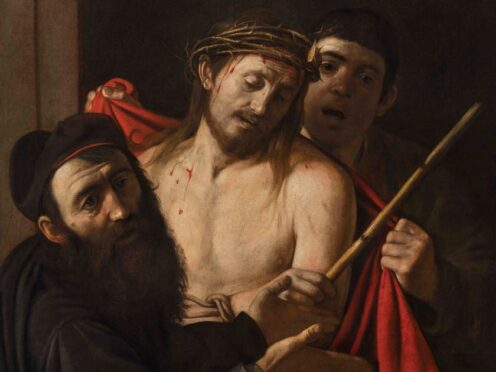A painting whose auction in Spain was halted in 2021 on suspicion that it might be a Caravaggio has been confirmed as a work by the Italian Baroque master, Spain’s Prado Museum has announced.
The artwork, once considered to have been lost, will be unveiled to the public for the first time in the museum later this month.
The Prado said the work titled Ecce Homo (Latin for Behold The Man) by Michelangelo Merisi da Caravaggio will go on display from May 27 until October as a special one-piece exhibition after an agreement with its new owner, who has not been identified.

After October, the work will be be moved to the Prado’s permanent collection for a further four months.
“Since its reappearance at an auction three years ago, Ecce Homo has represented one of the greatest discoveries in the history of art,” the museum said.
“Painted by the great Italian artist around 1605-09 and believed to have once been part of the private collection of Phillip IV of Spain, the painting is one of around only 60 known works by Caravaggio in existence, and thus one of the most valuable old master artworks in the world,” the Prado added.
In April 2021, Spanish authorities halted an auction of the work, which was then attributed to a disciple of a 17th-century Spanish painter, Jose de Ribera. They also put an export ban on it after the museum alerted the government it could be a Caravaggio.
The painting had been due to be auctioned with a starting price tag of 1,500 euros (£1,285). The value of an authentic Caravaggio would stretch into tens of millions, if not more.
Prado Museum director Miguel Falomir said that since then the owners had carried out studies and proceeded with the painting’s restoration, which led to the discovery “that it is, in fact, a work by Caravaggio and a work that arrived in Spain in the 17th century”.
The painting is not allowed to leave Spain without government permission.
Mr Falomir said it had been in the hands of a family in Madrid since the 19th century. The family was allowed to sell it privately earlier this year after an agreement with the Madrid regional government. The new owner wanted the public presentation of the piece to take place in the Prado Museum.
“For our part, we are more than happy to be the stage to present this new unshown work of Caravaggio to the public and critics,” Mr Falomir said in a video statement released by the museum.
The oil-on-canvas work depicts the Biblical passage of the Ecce Homo, in which Jesus Christ is presented to the crowds before being crucified. The work, measuring 44in by 34in, was known as early as the 1600s, but experts lost track of it.
The Prado said four of the most authoritative experts on Caravaggio and Baroque painting “all share the same passionate certainty: that Ecce Homo is a masterpiece by the Italian artist”.
One of the experts, Maria Cristina Terzaghi, was quoted as saying: “The speed of consensus around the work being a Caravaggio upon its rediscovery was absolutely unprecedented in the critical history of the painter, on whom scholars have rarely agreed, at least in the last 40 years.”
The Prado said that since April 2021, the work has been under the custodianship of the Colnaghi art gallery in collaboration with experts. The painting was restored by specialist Andrea Cipriani and his team under the supervision of experts from the Madrid regional government.
“In the last hundred years, no artist more than Caravaggio, with his adventurous biography and unmistakable style, has fascinated audiences of all ages and engaged scholars from halfway around the world. This work therefore presents one of the greatest discoveries in the history of art,” said Jorge Coll, chief executive of Colnaghi.
